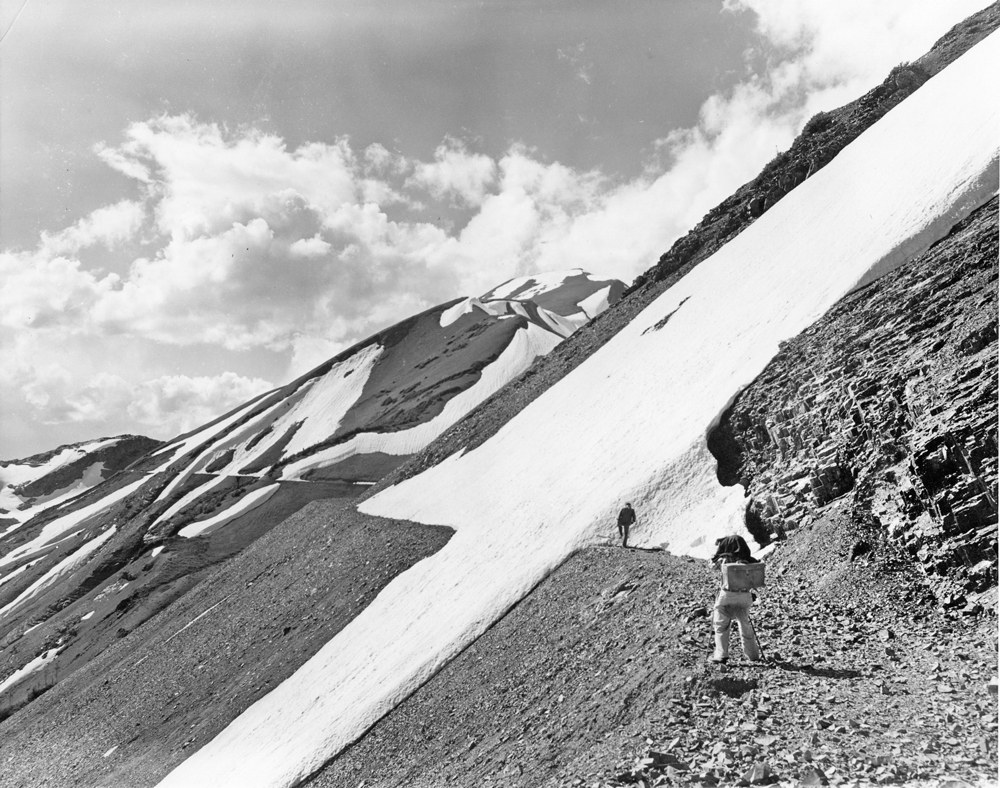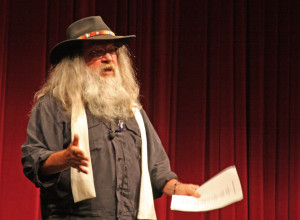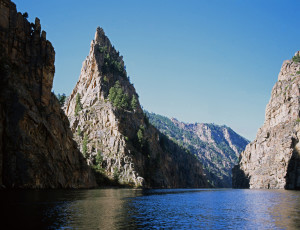By Duane Vandenbusche
It was the most fantastic mine in the history of the Gunnison Country. Located by William Mansfield in July of 1879 on the west flank of Treasury Mountain at 13,440 feet, the Eureka defied description. The mine was located above Yule Pass and near the top of the mountain. Even getting to the Eureka was difficult. One way in followed Yule Creek from Marble. The other route came from the headwaters of the Slate River and over terrifying Yule Pass. Silver ore from the mine was at first brought down by burro teams over Yule Pass and then down the Slate River to the Denver & Rio Grande Railroad spur at Anthrocite, four miles north of Crested Butte. The burro trains made the round trip in two days, and it cost $3 per ton for haulage.
The mine was located on the face of an almost perpendicular cliff on the side of Treasury Peak. Miners had to ascend and descend by means of a long rope. Avalanches were never ending in such steep terrain. In March of 1891, a huge slide broke loose from near the top of the mountain and roared down the mountainside, killing three miners. The bodies were not found until spring. The Eureka shipped rich ore in the early 1880s and had the reputation of being one of the top silver mines in the state. High grade galena, copper and silver were taken out of the Eureka.
When the price of silver fell to 58¢ an ounce in the 1890s, the economic panic which followed closed the Eureka. The mine reopened for a short time in 1925, but it soon closed again because of its remoteness and the elements. In 1948, the Eureka rose from the ashes because of R.E. Simpson and the Slate River Mining Company. Simpson had been involved with the Forest Queen Mine in Irwin and mines in the North Pole Basin. The mine owner in 1948 built a 10-mile stretch of shelf road from the Slate River to Paradise Divide, and then over Yule Pass to near the Eureka. Part of the road followed the grade of a proposed and unbelievable Elk Mountain Railroad of the 1890s.

By 1949, Simpson had eight miners in the tunnel of the Eureka, shooting out the solid bore of ice which had accumulated through the years, which blocked the workings. They used hand tools to get to an ore body 14 feet thick containing lead, zinc, copper and silver. Simpson hired Tony Kapushion of Crested Butte to run a cable for a tram to the mine on the side of the perpendicular peak. Kapushion used two horses to get the cable to the mine. By 1950, a 2,200-foot, $100,000 aerial tram had been constructed from the Eureka to a bulldozed road below. Simpson took 50 loads of ore in two Dodge Power Wagons over Yule Pass and down the Slate River to the D&RG Railroad in Crested Butte. The ore was then taken to a custom mill in Midvale, Utah.
Operations at the Eureka ended abruptly before the end of 1950. The enormous difficulty of transporting the ore, high expenses and lack of high-grade ore led to the closing of the Eureka for good. Today, one can still see the mine opening, the cable, and near the road below, a cement foundation. All are monuments to the great Eureka, a mine without parallel in the history of the Gunnison Country.
This article was originally published in The Gunnison County Times, Aug. 21, 2014
Duane Vandenbusche is a Professor of History at Western State Colorado University in Gunnison.




I will be doing a 4th revision of my book, “Crystal What Really Happened” in 2016. If any one has additional information concerning the Eureka Mine, I would appreciate that information.